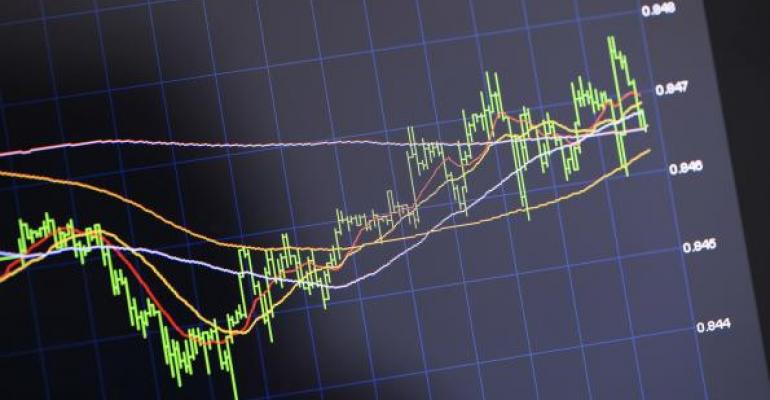It’ll come as no surprise to you that stocks have been, shall we say, a little wobbly recently. What you may not have noticed are the signs that investors’ conviction in stocks — some stocks — is mounting again.
The “death cross” in the SPY-OEF spread played out in a precipitous nosedive to a long-term support line from which a rebound has been staged. And now? A “golden cross” — the diametric opposite of the death cross — has cropped up on the chart. The gold refers to a bullish upturn of the spread’s 50-day moving average over its 200-day average.

Despite the SPY-OEF spread’s track record as a reliable indicator of shareholder confidence, investors aren’t rushing willy-nilly to buy just any equities. No, they’re being quite selective. Particularly about risk. See the red risk appetite line in the chart below? Punters’ taste for high-beta issues has been clearly stymied since February.

You can see investors’ caution played out in the recent performance of Select Sector SPDR ETFs. The funds’ Sharpe ratios reflect buyers’ focus on traditionally defensive issues such as utilities and consumer staples, but also indicates that some space has been saved in risk budgets for health care and real estate plays. The secret sauce for these circumspect investors? Largely, low correlation to the broader market.

Now, you might think correlations in the 70th- or 80th-percentiles high until you consider the 0.93 average coefficient for the worst-performing sector funds.

So, investors are still making bets on large caps but they’ve been mostly lining up at the $2 window ‘til now. Low-vol plays — XLU and XLY — have the potential to rise another 25 to 30 percent over the upcoming market cycle, but higher-beta segments like real estate and health care are a mixed bag going forward. Technically, XLRE could gain as much as 34 percent, but XLV needs a fresh incentive to reach a near-term objective some 21 percent higher than its current price.
Ready to place your bets?
Brad Zigler is WealthManagement's alternative investments editor. Previously, he was the head of marketing, research and education for the Pacific Exchange's (now NYSE Arca) option market and the iShares complex of exchange traded funds.





